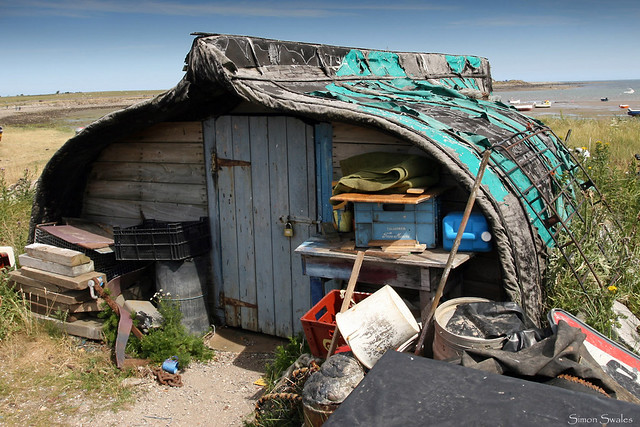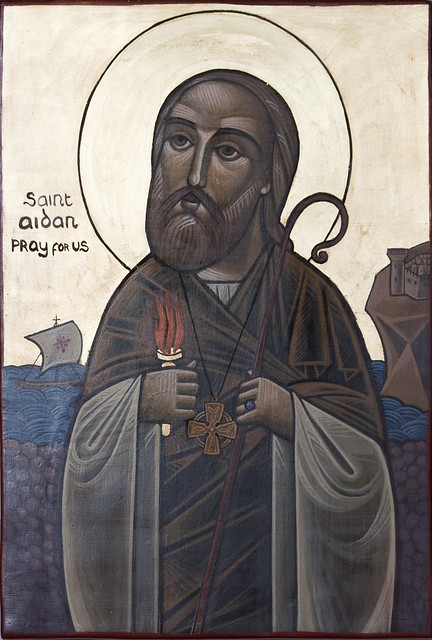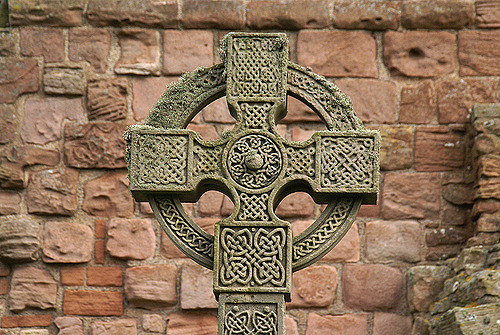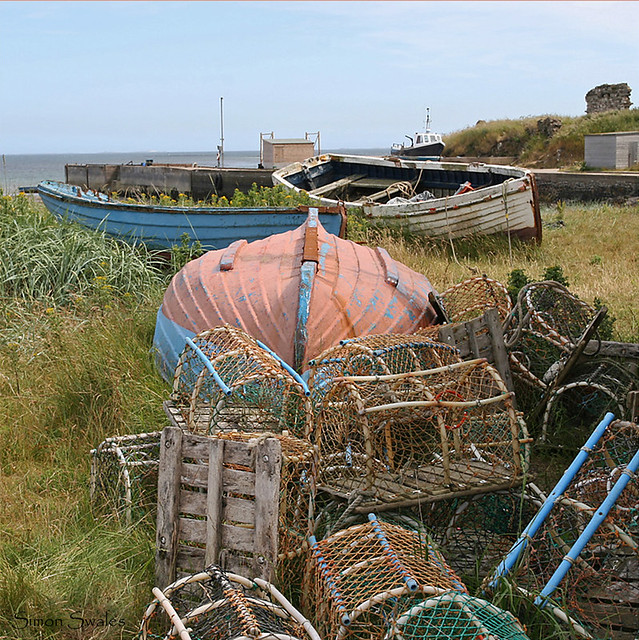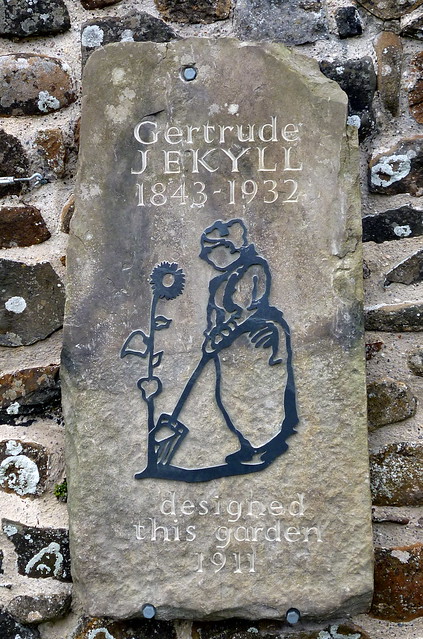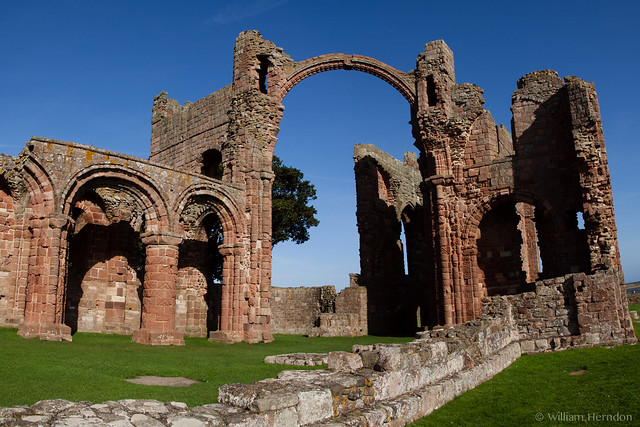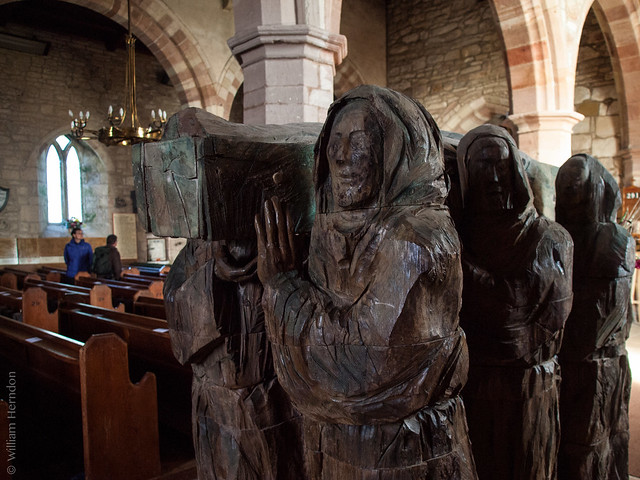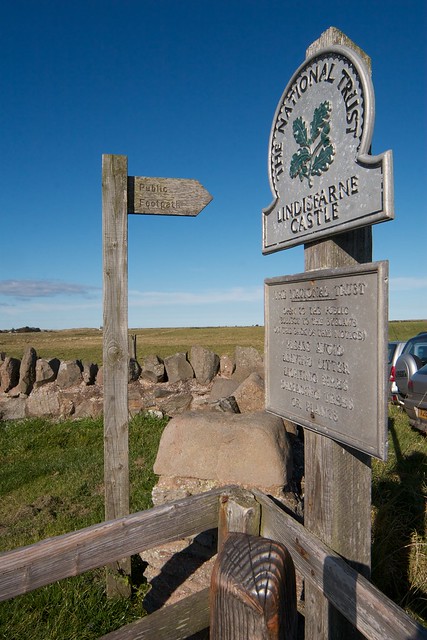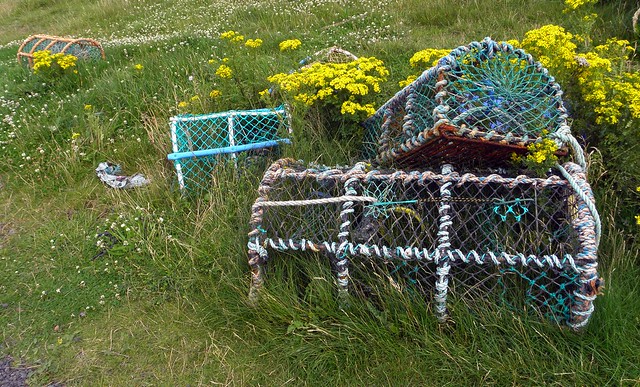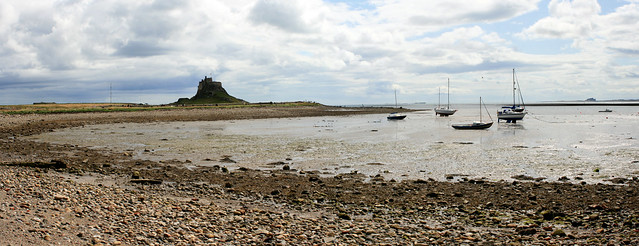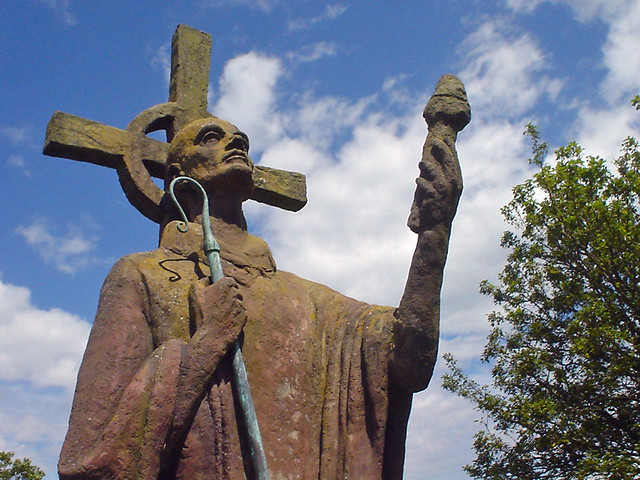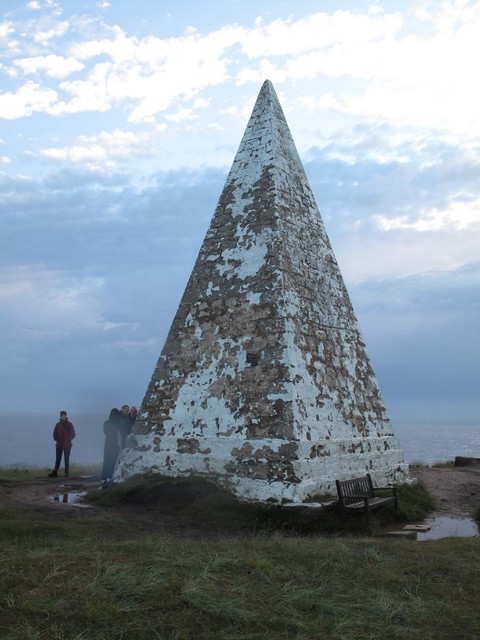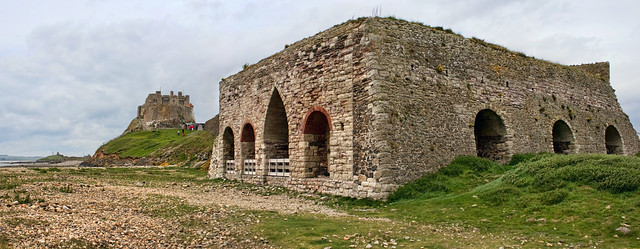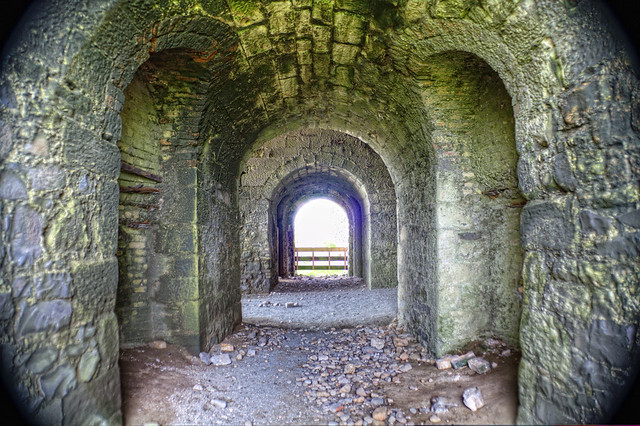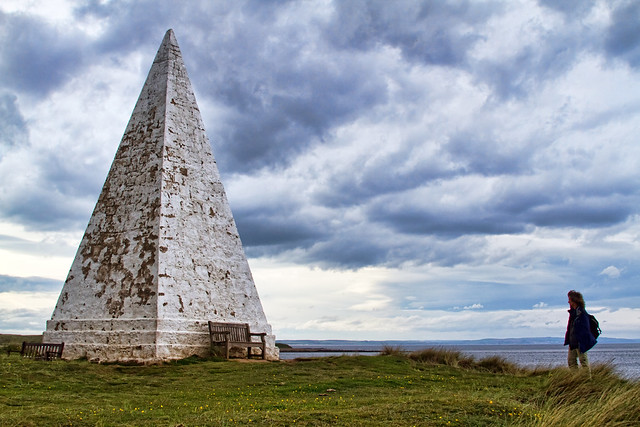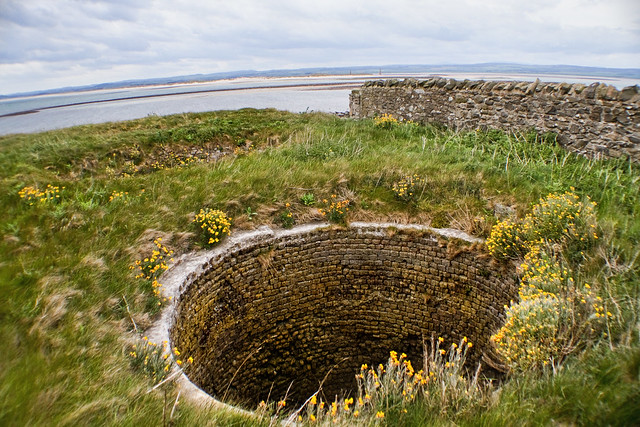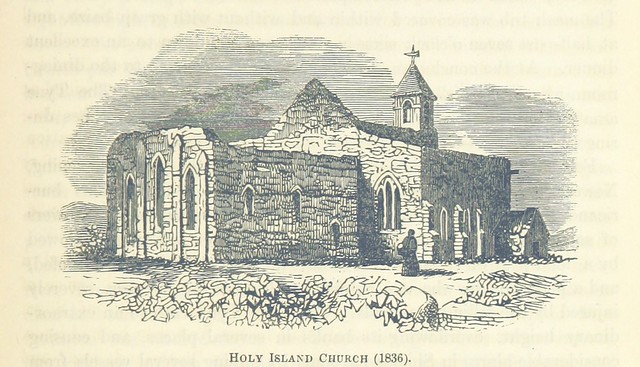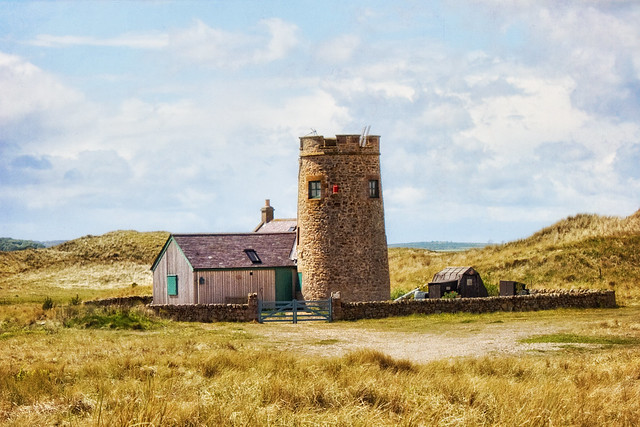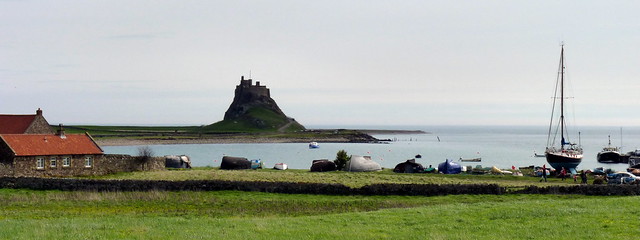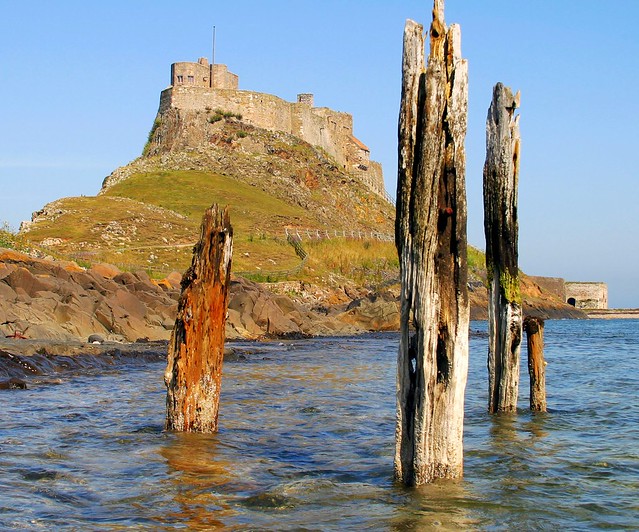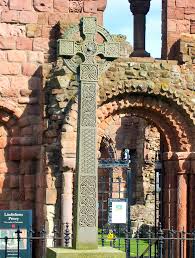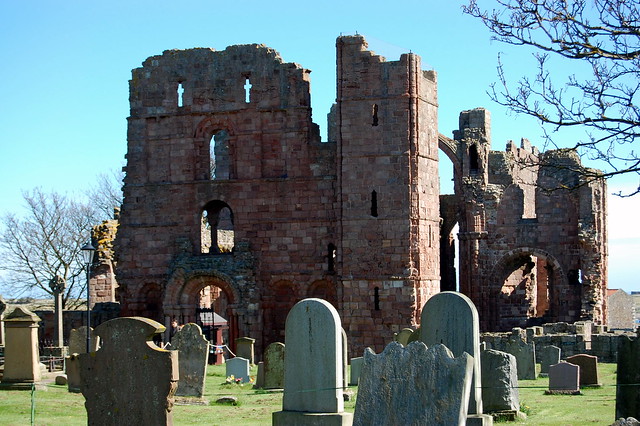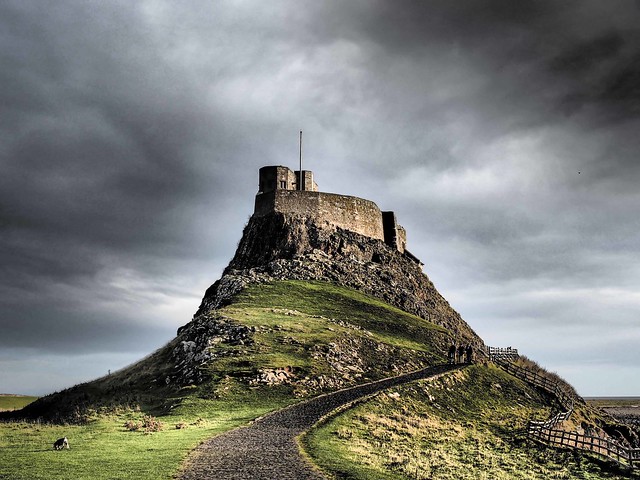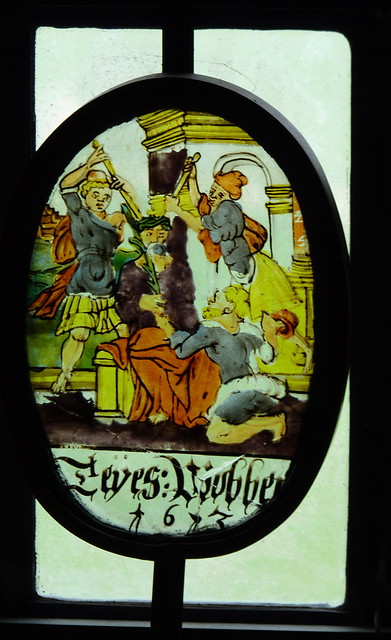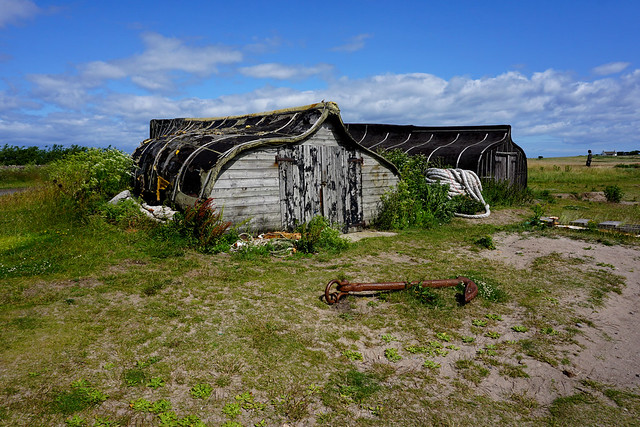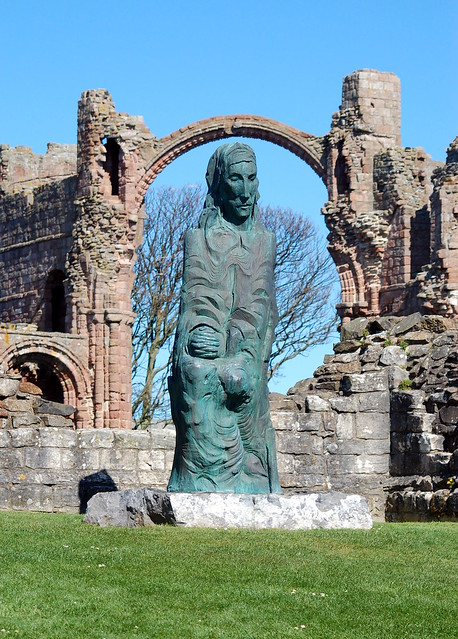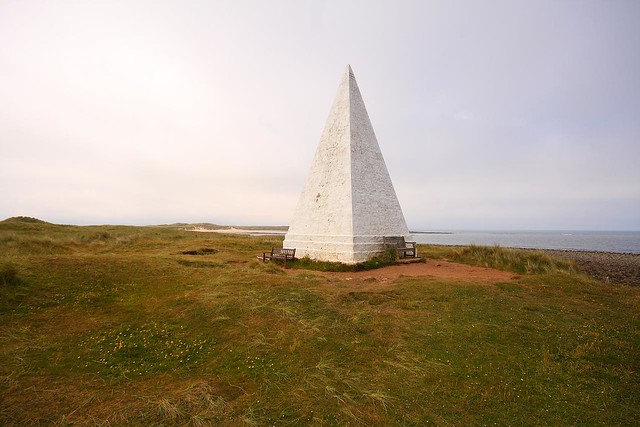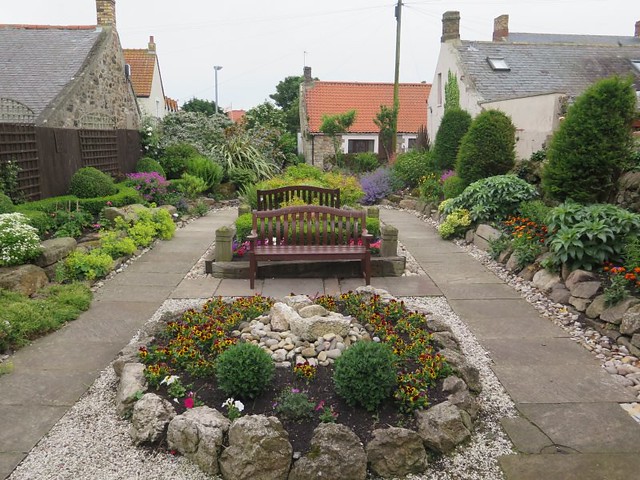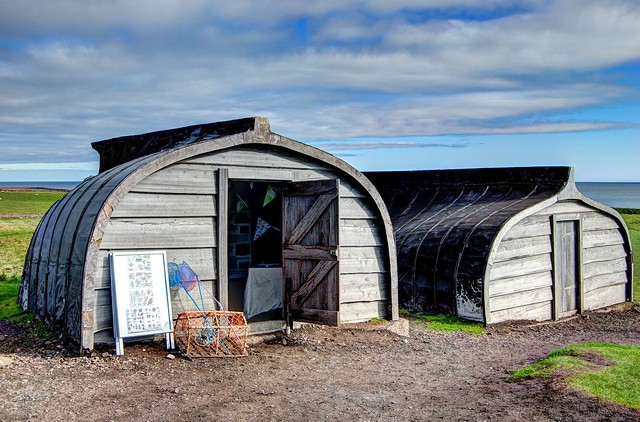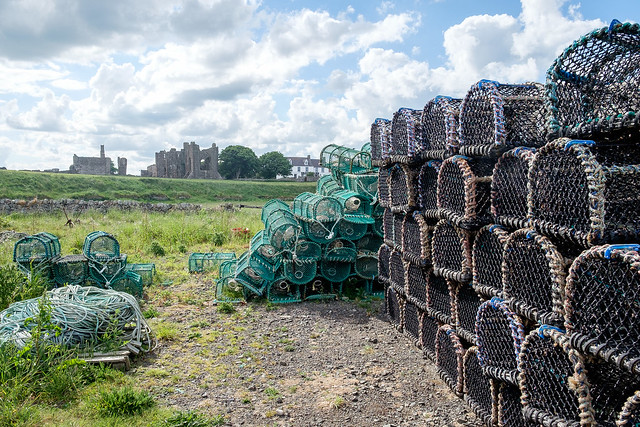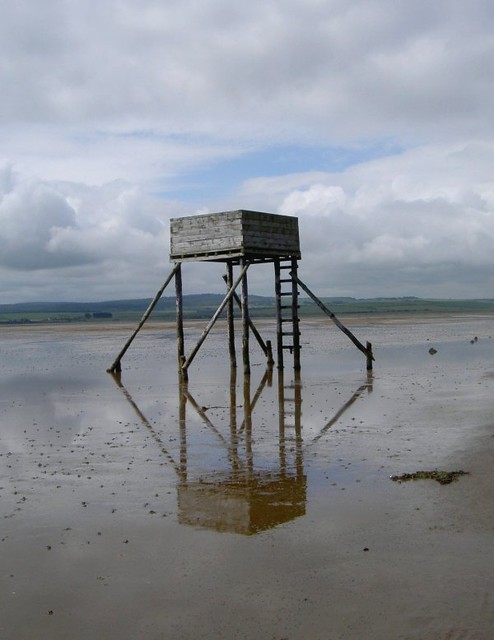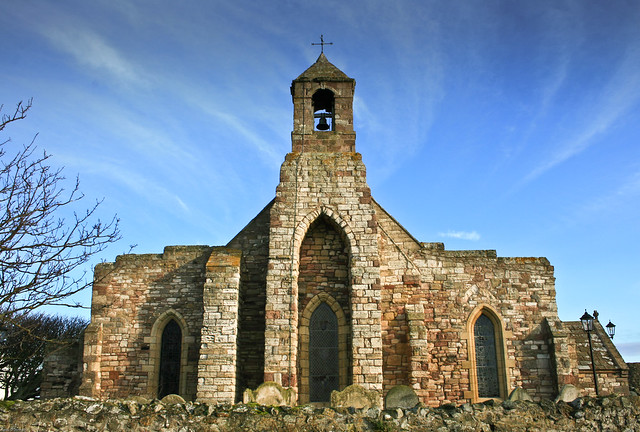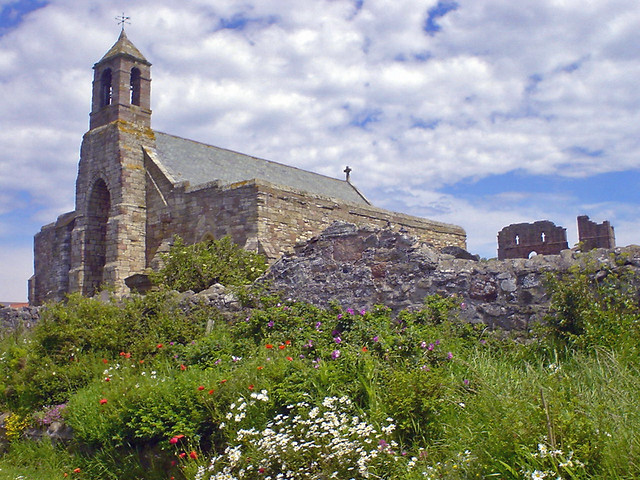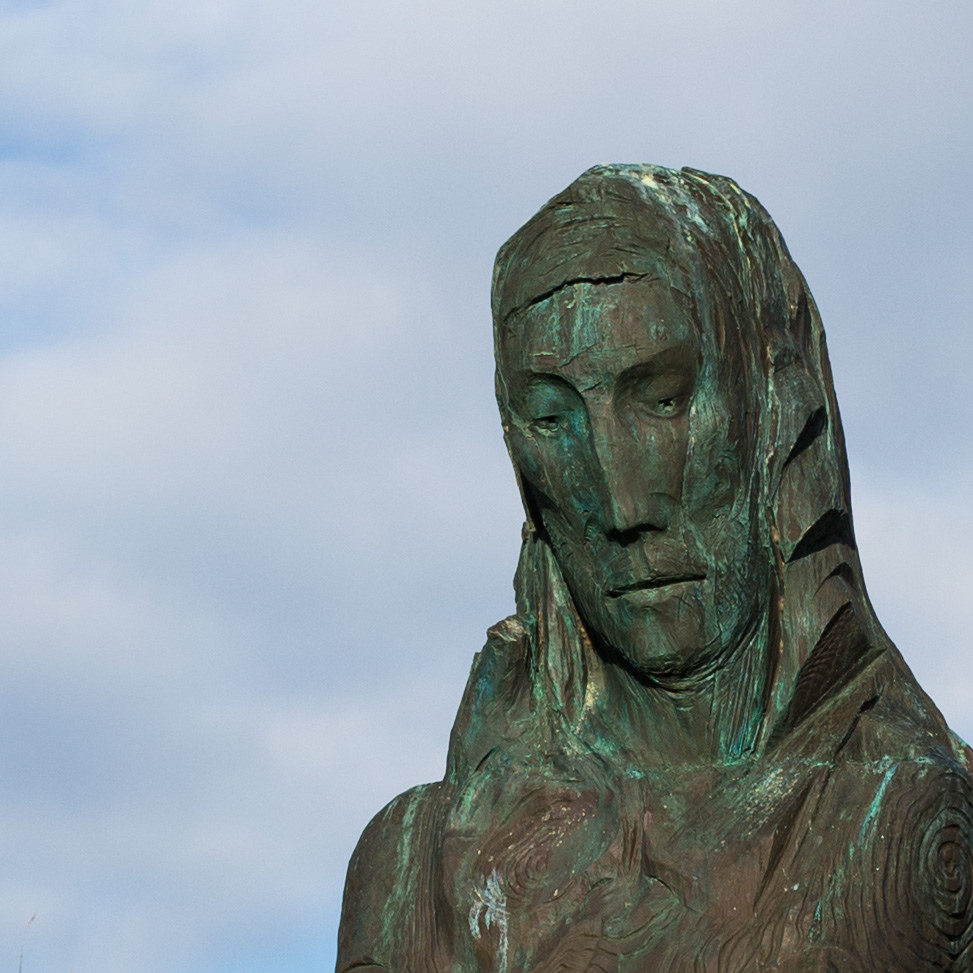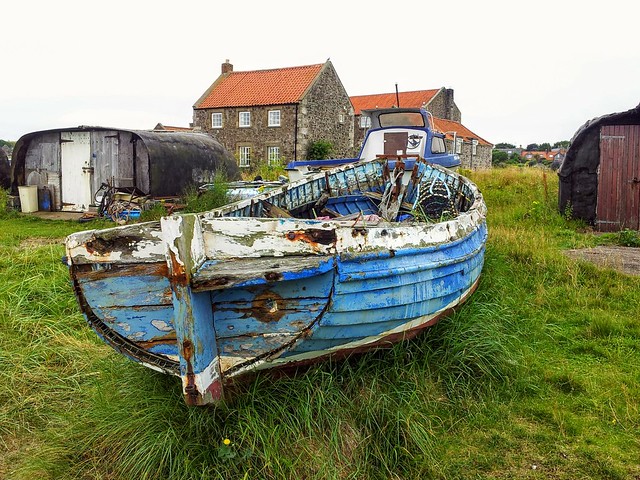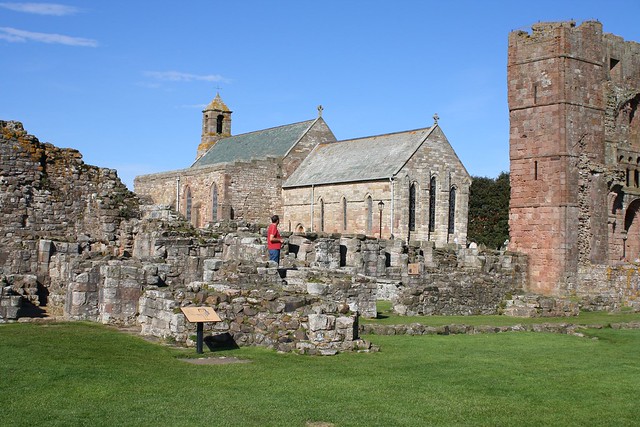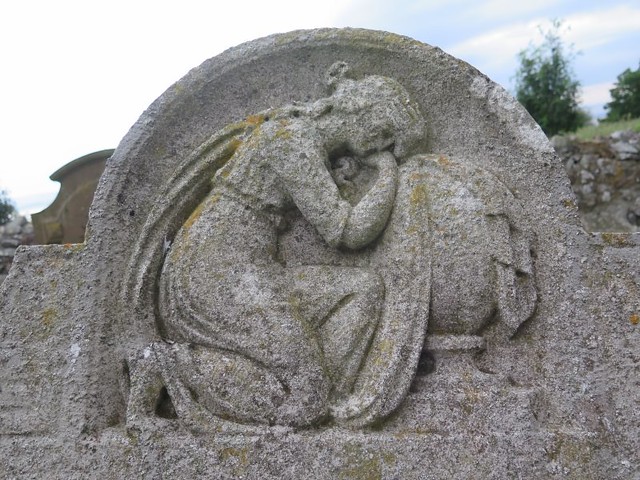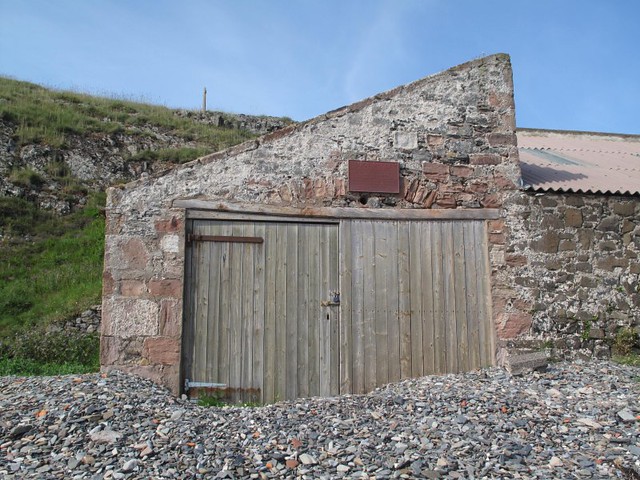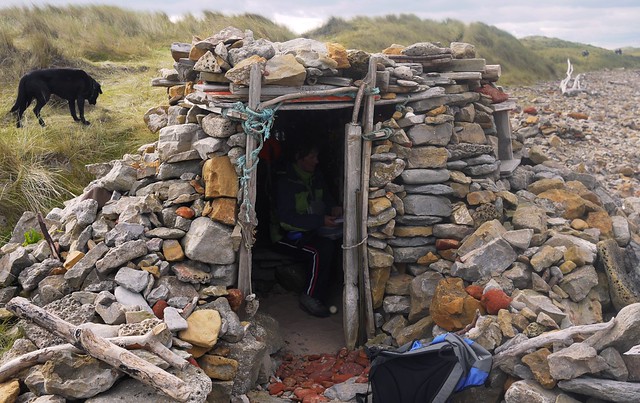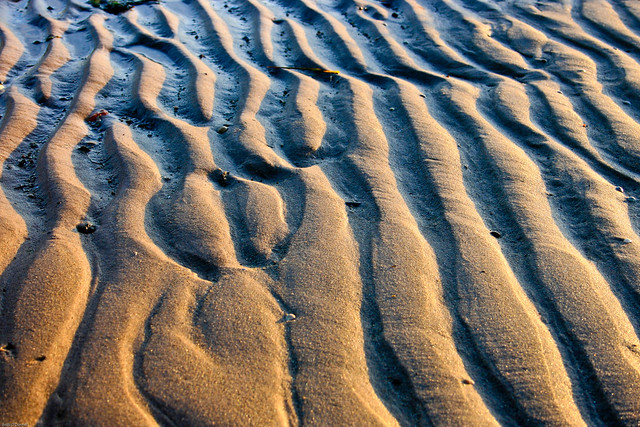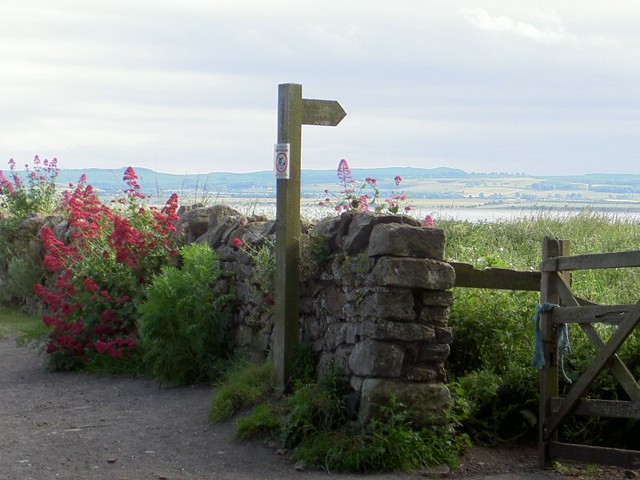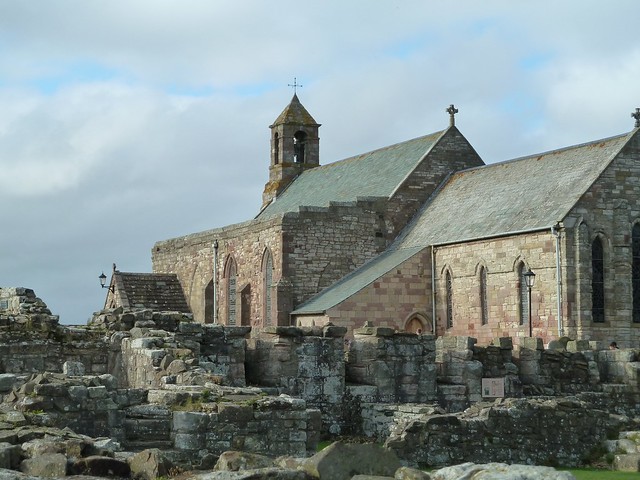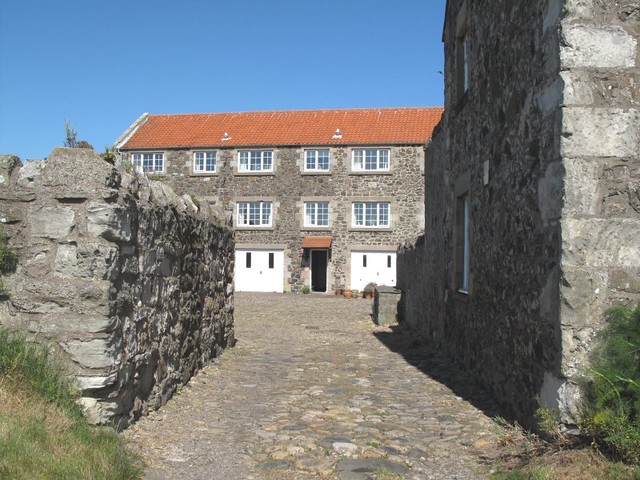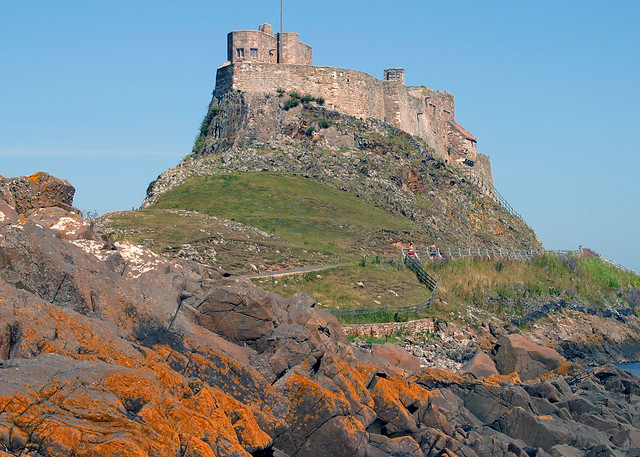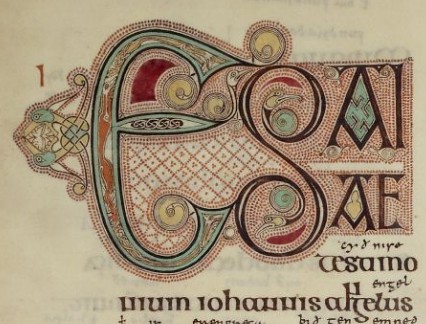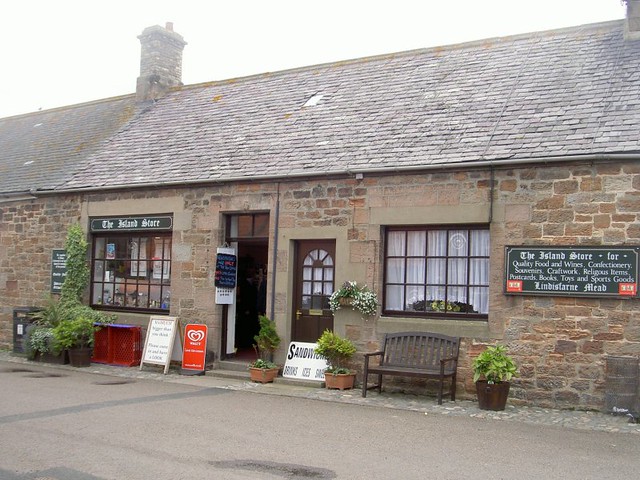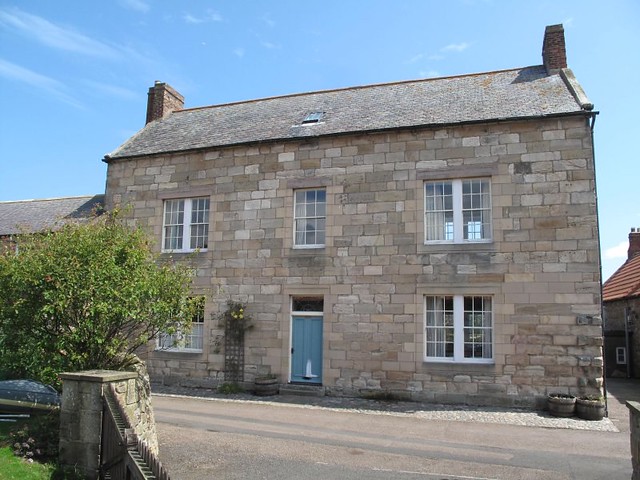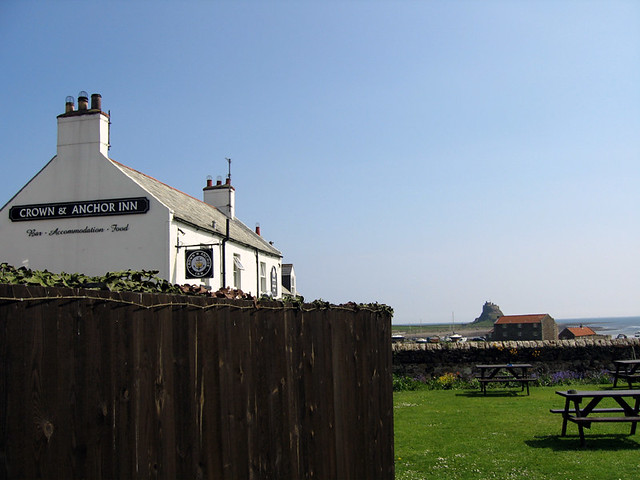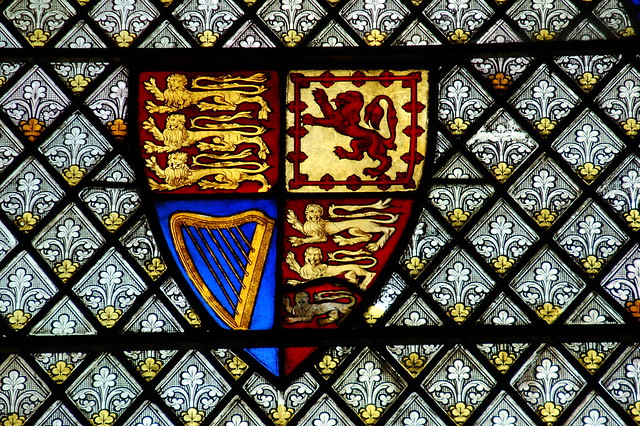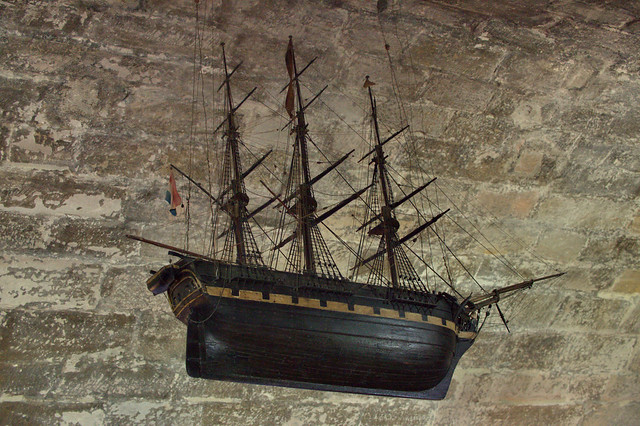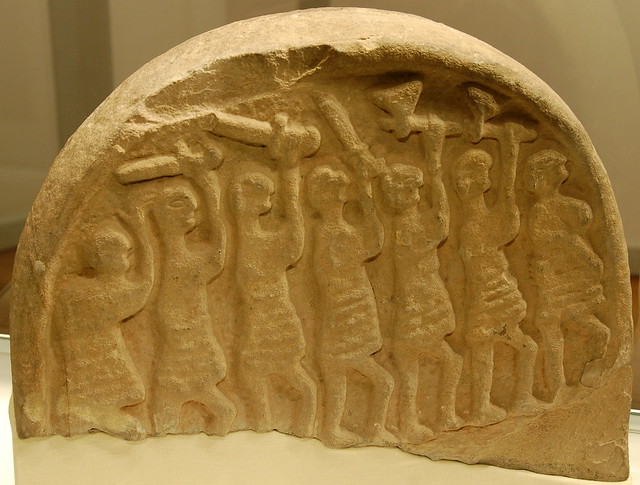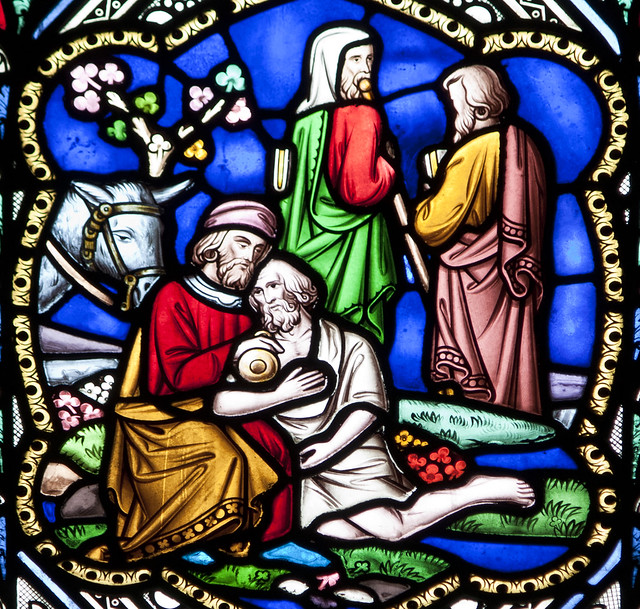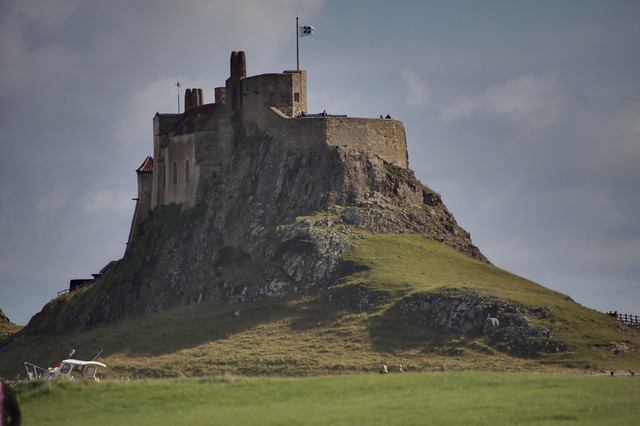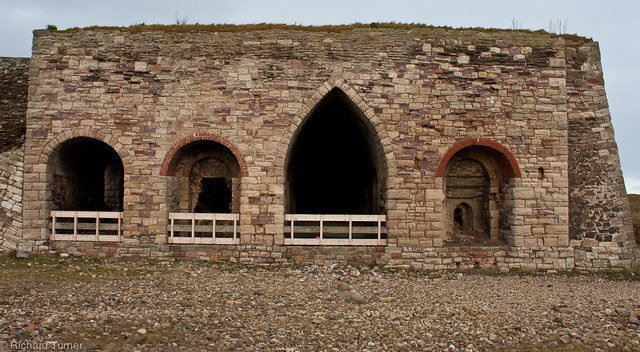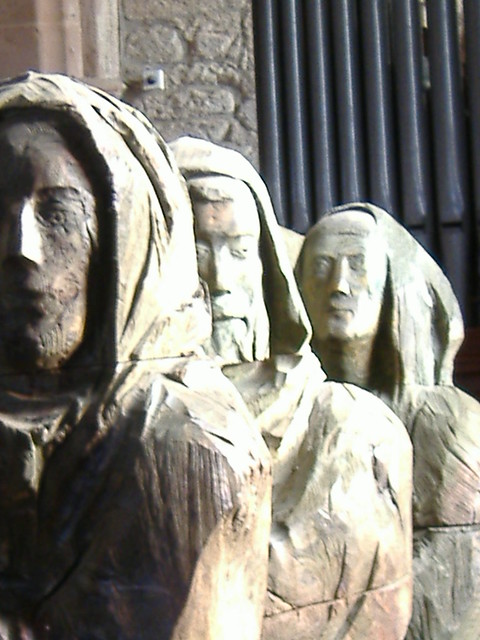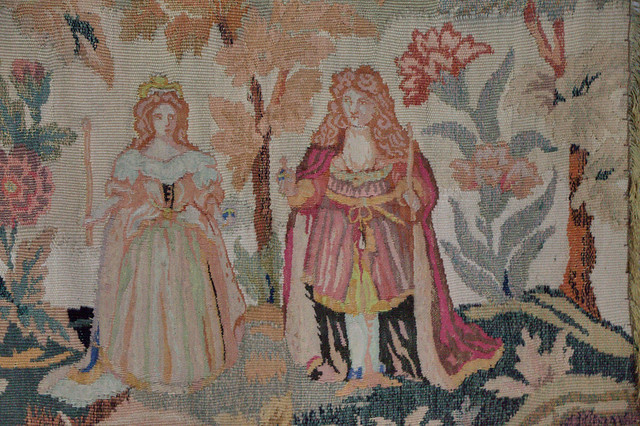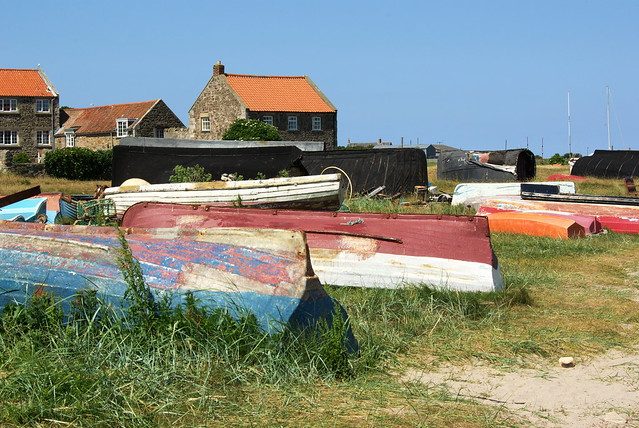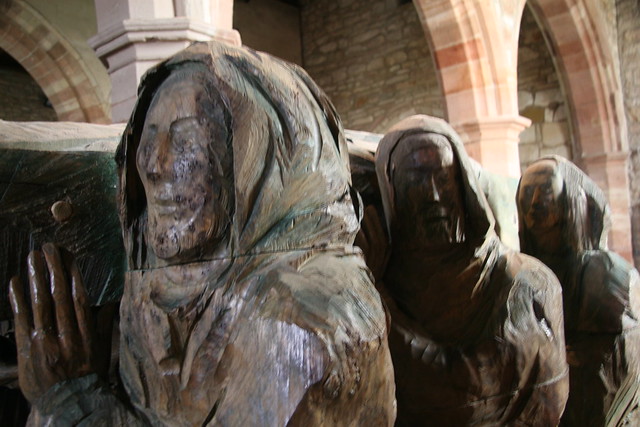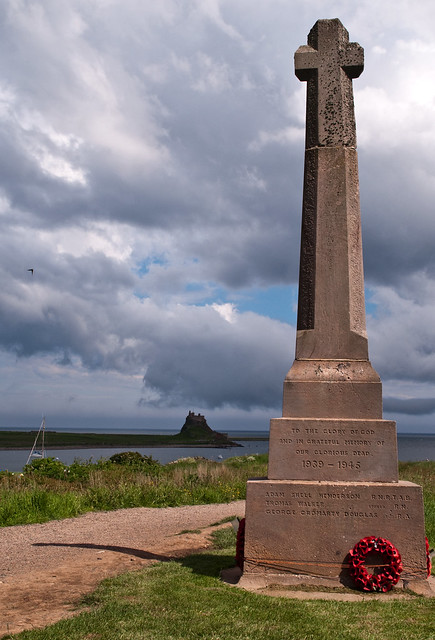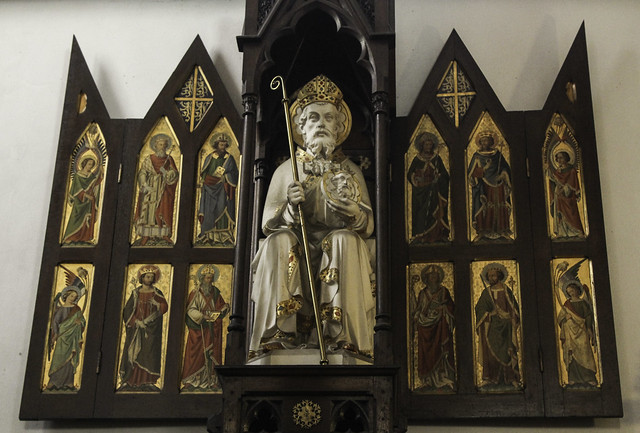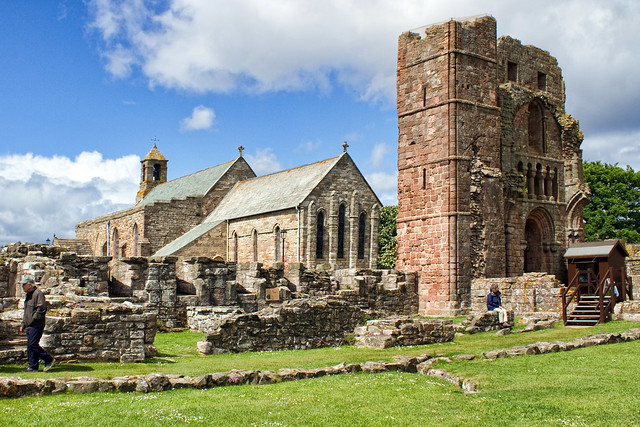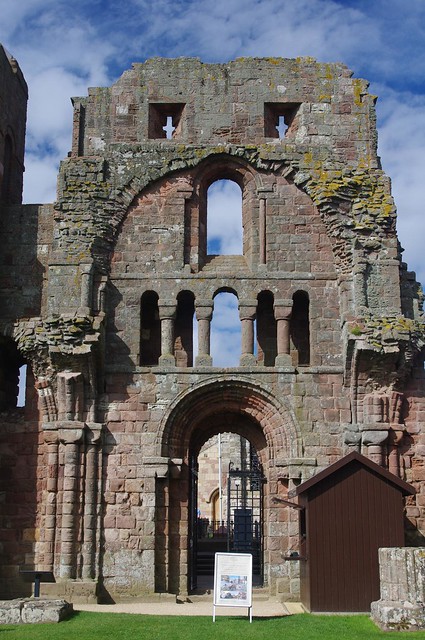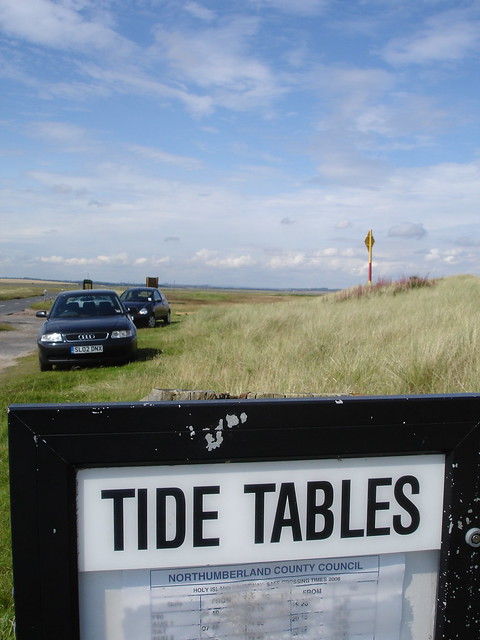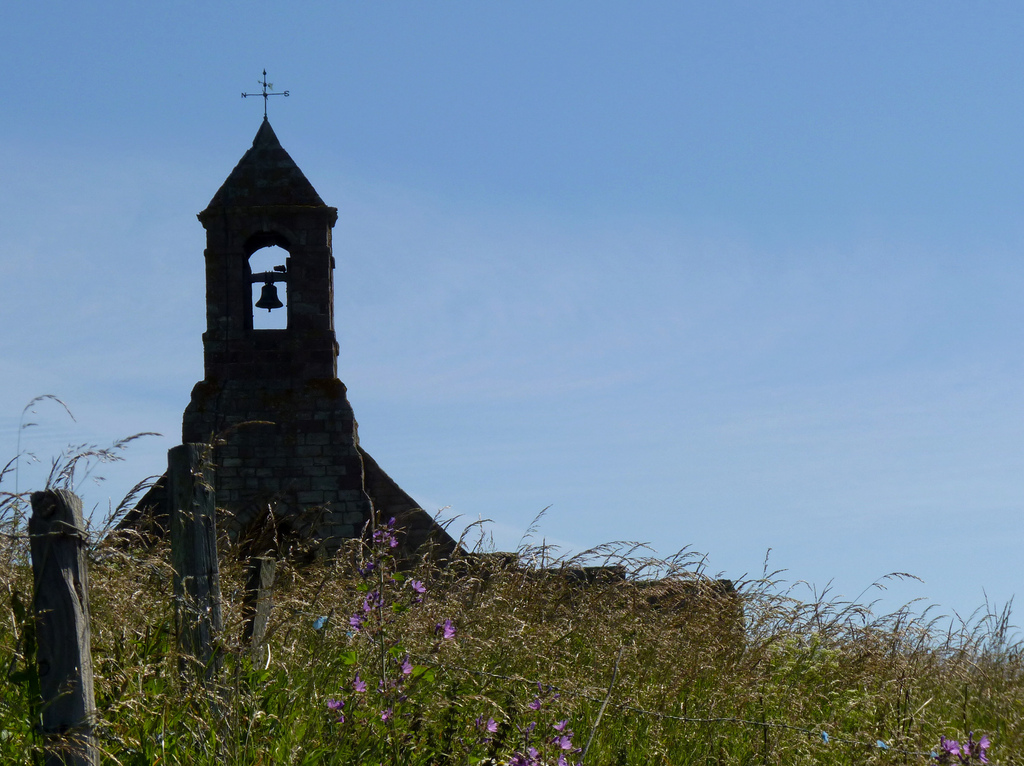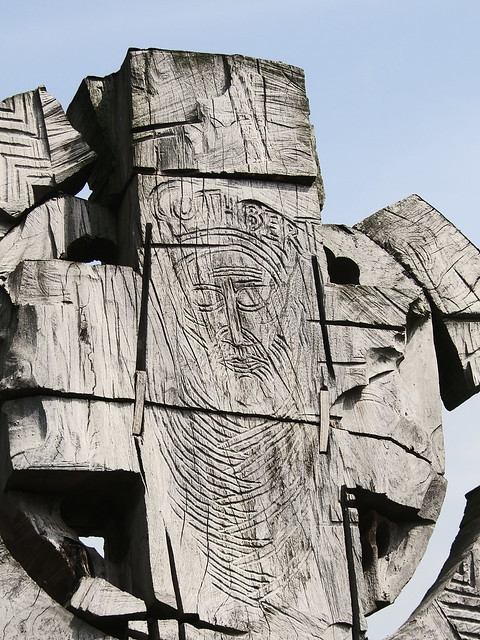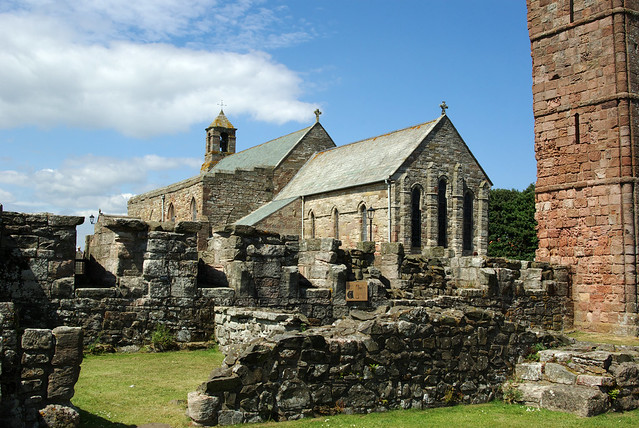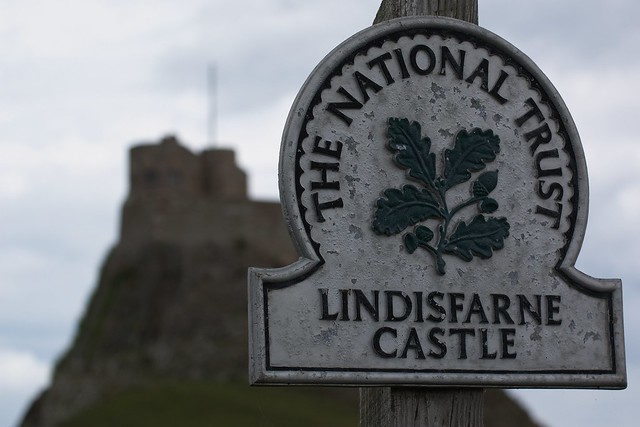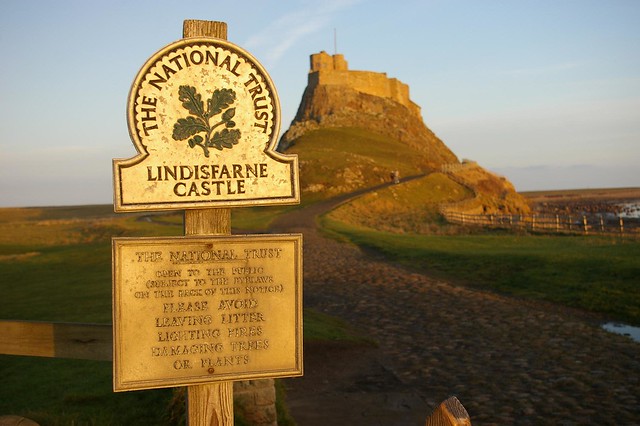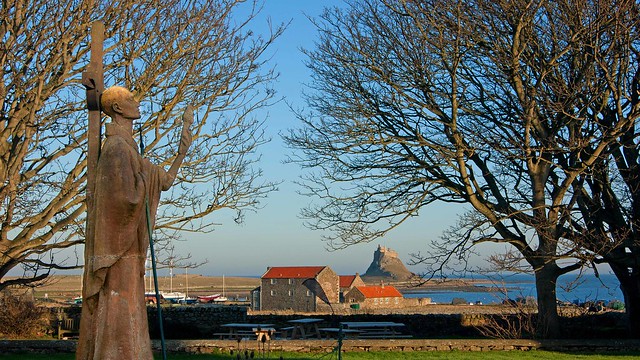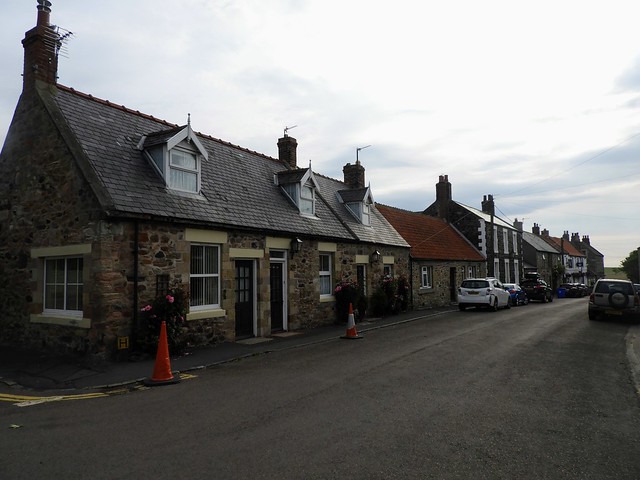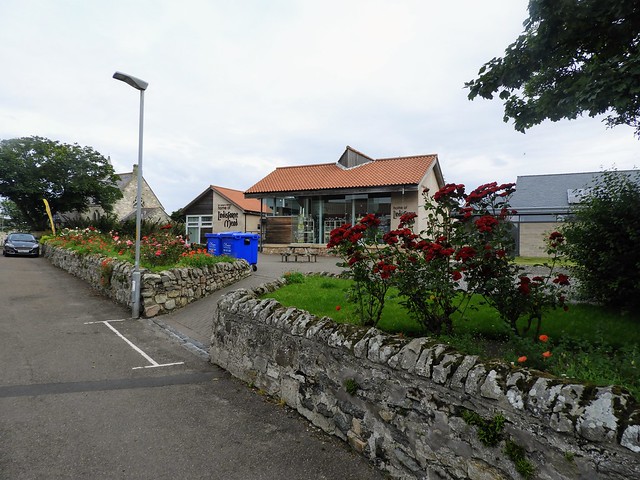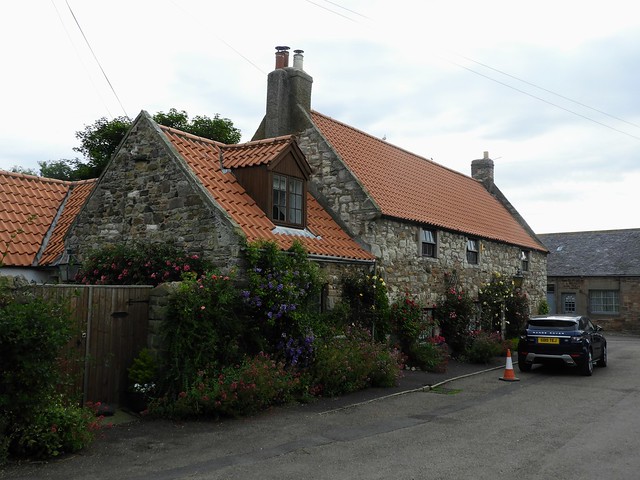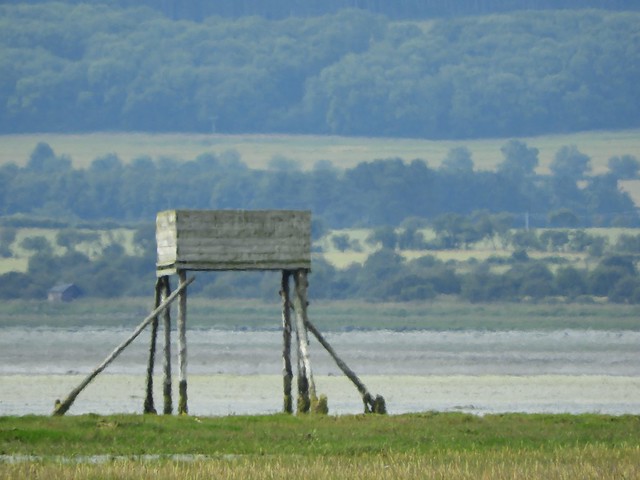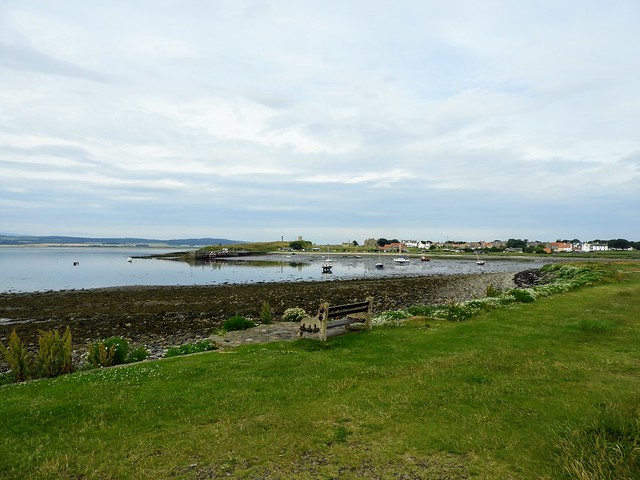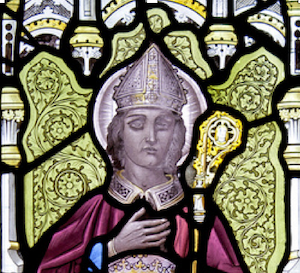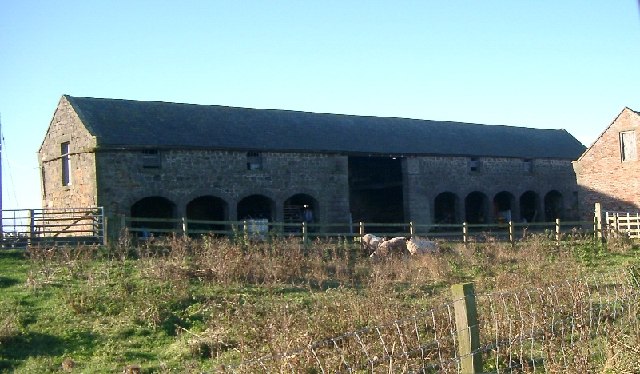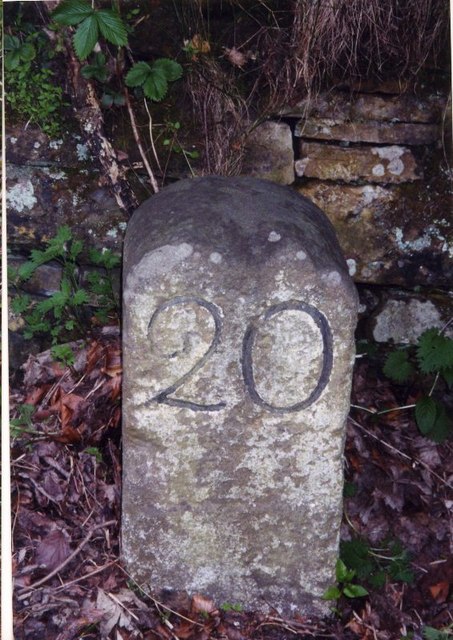Topics > Northumberland > Holy Island
Holy Island
Early
The northeast coast of England was largely unsettled by Roman civilians apart from the Tyne valley and Hadrian's Wall. The area had been little affected during the centuries of nominal Roman occupation. The countryside had been subject to raids from both Scots and Picts and was "not one to attract early Germanic settlement". King Ida (reigned from 547) started the sea-borne settlement of the coast, establishing an urbs regia at Bamburgh across the bay from Lindisfarne. The conquest was not straightforward, however. The Historia Brittonum recounts how, in the 6th century, Urien, prince of Rheged, with a coalition of North British kingdoms, besieged Angles led by Theodric of Bernicia at the island for three days and nights, until internal power struggles led to the Britons' defeat.
Lindisfarne Priory
The monastery of Lindisfarne was founded by Irish monk Saint Aidan, who had been sent from Iona off the west coast of Scotland to Northumbria at the request of King Oswald. The priory was founded before the end of 634 and Aidan remained there until his death in 651. The priory remained the only seat of a bishopric in Northumbria for nearly thirty years. Finian (bishop 651–661) built a timber church "suitable for a bishop's seat". St. Bede however was critical of the fact that the church was not built of stone but only of hewn oak thatched with reeds. A later bishop, Eadbert removed the thatch and covered both walls and roof in lead. An abbot, who could be the bishop, was elected by the brethren and led the community. St. Bede comments on this:
Lindisfarne became the base for Christian evangelism in the North of England and also sent a successful mission to Mercia. Monks from the Irish community of Iona settled on the island. Northumberland's patron saint, Saint Cuthbert, was a monk and later abbot of the monastery, and his miracles and life are recorded by the Venerable Bede. Cuthbert later became Bishop of Lindisfarne. An anonymous life of Cuthbert written at Lindisfarne is the oldest extant piece of English historical writing. From its reference to "Aldfrith, who now reigns peacefully" it must date to between 685 and 704. Cuthbert was buried here, his remains later translated to Durham Cathedral (along with the relics of Saint Eadfrith of Lindisfarne). Eadberht of Lindisfarne, the next bishop (and saint) was buried in the place from which Cuthbert's body was exhumed earlier the same year when the priory was abandoned in the late 9th century.
Cuthbert's body was carried with the monks, eventually settling in Chester-le-Street before a final move to Durham. The saint's shrine was the major pilgrimage centre for much of the region until its despoliation by Henry VIII's commissioners in 1539 or 1540. The grave was preserved however and when opened in 1827 yielded a number of remarkable artefacts dating back to Lindisfarne. The inner (of three) coffins was of incised wood, the only decorated wood to survive from the period. It shows Jesus surrounded by the Four Evangelists. Within the coffin was a pectoral cross across made of gold and mounted with garnets and intricate tracery. There was a comb made of elephant ivory, a rare and expensive item in Northern England. Also inside was an embossed silver covered travelling altar. All were contemporary with the original burial on the island. When the body was placed in the shrine in 1104 other items were removed: a paten, scissors and a chalice of gold and onyx. Most remarkable of all was a gospel (known as the St Cuthbert Gospel or Stonyhurst Gospel from its association with the college). The manuscript is in an early, probably original, binding beautifully decorated with deeply embossed leather.
Following Finian's death, Colman became Bishop of Lindisfarne. Up to this point the Northumbrian (and latterly Mercian) churches had looked to Lindisfarne as the mother church. There were significant liturgical and theological differences with the fledgling Roman party based at Canterbury. According to Stenton: "There is no trace of any intercourse between these bishops Mercians and the see of Canterbury". The Synod of Whitby in 663 changed this. Allegiance switched southwards to Canterbury and thence to Rome. Colman departed his see for Iona and Lindisfarne ceased to be of such major importance.
In 735 the northern ecclesiastical province of England was established with the archbishopric at York. There were only three bishops under York: Hexham, Lindisfarne and Whithorn whereas Canterbury had the twelve envisaged by St. Augustine. The Diocese of York encompassed roughly the counties of Yorkshire and Lancashire. Hexham covered County Durham and the southern part of Northumberland up to the River Coquet and eastwards into the Pennines. Whithorn covered most of Dumfries and Galloway region west of Dumfries itself. The remainder, Cumbria, northern Northumbria, Lothian and much of the Kingdom of Strathclyde formed the diocese of Lindisfarne.
For long years David Adam was rector of Holy Island and ministered to thousands of pilgrims and other visitors.
Lindisfarne Gospels
At some point in the early 8th century, the famous illuminated manuscript known as the Lindisfarne Gospels, an illustrated Latin copy of the Gospels of Matthew, Mark, Luke and John, was made probably at Lindisfarne and the artist was possibly Eadfrith, who later became Bishop of Lindisfarne. Sometime in the second half of the 10th century a monk named Aldred added an Anglo-Saxon (Old English) gloss to the Latin text, producing the earliest surviving Old English copies of the Gospels. Aldred attributed the original to Eadfrith (bishop 698–721). The Gospels were written with a good hand, but it is the illustrations done in an insular style containing a fusion of Celtic, Germanic and Roman elements that are truly outstanding. According to Aldred, Eadfrith's successor Æthelwald was responsible for pressing and binding it and then it was covered with a fine metal case made by a hermit called Billfrith. The Lindisfarne Gospels now reside in the British Library in London, somewhat to the annoyance of some Northumbrians. In 1971 professor Suzanne Kaufman of Rockford, Illinois presented a facsimile copy of the Gospels to the clergy of the island.
Vikings
In 793, a Viking raid on Lindisfarne caused much consternation throughout the Christian west and is now often taken as the beginning of the Viking Age. The D and E versions of the Anglo-Saxon Chronicle record:
Her wæron reðe forebecna cumene ofer Norðhymbra land, ⁊ þæt folc earmlic bregdon, þæt wæron ormete þodenas ⁊ ligrescas, ⁊ fyrenne dracan wæron gesewene on þam lifte fleogende. Þam tacnum sona fyligde mycel hunger, ⁊ litel æfter þam, þæs ilcan geares on .vi. Idus Ianuarii, earmlice hæþenra manna hergunc adilegode Godes cyrican in Lindisfarnaee þurh hreaflac ⁊ mansliht.
In this year fierce, foreboding omens came over the land of the Northumbrians, and the wretched people shook; there were excessive whirlwinds, lightning, and fiery dragons were seen flying in the sky. These signs were followed by great famine, and a little after those, that same year on 6th ides of January, the ravaging of wretched heathen people destroyed God's church at Lindisfarne.
The generally accepted date for the Viking raid on Lindisfarne is in fact 8 June; Michael Swanton writes: "vi id Ianr, presumably [is] an error for vi id Iun (8 June) which is the date given by the Annals of Lindisfarne (p. 505), when better sailing weather would favour coastal raids."
Alcuin, a Northumbrian scholar in Charlemagne's court at the time, wrote:
Never before has such terror appeared in Britain as we have now suffered from a pagan race ... The heathens poured out the blood of saints around the altar, and trampled on the bodies of saints in the temple of God, like dung in the streets.
The English seemed to have turned their back on the sea as they became more settled. Many monasteries were established on islands, peninsulas, river mouths and cliffs. Isolated communities were less susceptible to interference and the politics of the heartland. The amazement of the English at the raids from the sea must have been matched by the amazement of the raiders at such (to them) vulnerable, wealthy and unarmed settlements.
These preliminary raids, unsettling as they were, were not followed up. The main body of the raiders passed north around Scotland. The 9th century invasions came not from Norway, but by the Danes from around the entrance to the Baltic. The first Danish raids into England were in the Isle of Sheppey, Kent during 835 and from there influence spread north. During this period religious art continued to flourish on Lindisfarne, at this period the Liber Vitae of Durham was started in the priory.
By 866 the Danes were in York and in 873 the army was moving into Northumberland. With the collapse of the Northumbrian kingdom the monks of Lindisfarne fled the island in 875 taking with them St. Cuthbert's bones (which are now buried at the cathedral in Durham).
Prior to the 9th century Lindisfarne Priory had, in common with other such establishments, held large tracts of land which were managed directly or leased to farmers with a life interest only. Following the Danish occupation land was increasingly owned by individuals and could be bought, sold and inherited. Following the Battle of Corbridge in 914 Ragnald seized the land giving some to his followers Scula and Onlafbal.
Middle Ages
The priory was re-established in Norman times in 1093 as a Benedictine house and continued until its suppression in 1536 under Henry VIII. The standing remains date from this later priory, while the site of the original priory is now occupied by the parish church. The site is a grade I listed building number 1042304. The earliest parts of the area are a scheduled ancient monument number 1011650.
In 1462, during the Wars of the Roses, Margaret of Anjou made an abortive attempt to seize the Northumbrian castles. Following a storm at sea 400 troops had to seek shelter on the Holy Island, where they surrendered to the Yorkists.
During the Jacobite Rising of 1715, Lancelot Errington, one of a number of locals who supported the Jacobite cause, visited the castle. Some sources say that Lancelot asked the Master Gunner, who also served as the unit's barber for a shave. While inside it became clear that most of the garrison were away. Later that day he returned with his nephew Mark Errington, claiming that he had lost the key to his watch. They were allowed in, overpowered the three soldiers present, and claimed the castle as a landing site for the Jacobite group led by Thomas Forster, Member of Parliament for the county of Northumberland. Reinforcements did not arrive to support the Erringtons, so when a detachment of 100 men arrived from Berwick to retake the castle they were only able to hold out for one day. Fleeing, they were captured at the tollbooth at Berwick and imprisoned, but were later able to tunnel out of their gaol and escape.
Modern
A Dundee firm built lime kilns on Lindisfarne in the 1860s, and lime was burnt on the island until at least the end of the 19th century. The kilns are among the most complex in Northumberland. Horses carried limestone, along the Holy Island Waggonway, from a quarry on the north side of the island to the lime kilns, where it was burned with coal transported from Dundee on the east coast of Scotland. There are still some traces of the jetties by which the coal was imported and the lime exported close by at the foot of the crags. The remains of the waggon way between the quarries and the kilns makes for a pleasant and easy walk. At its peak over 100 men were employed. Crinoid columnals extracted from the quarried stone and threaded into necklaces or rosaries became known as St Cuthbert's beads.
Workings on the lime kilns stopped by the start of the 20th century. The lime kilns on Lindisfarne are among the few being actively preserved in Northumberland.
Holy Island Golf Club was founded in 1907 but later closed in the 1960s.
Visit the page: Lindisfarne for references and further details. You can contribute to this article on Wikipedia.
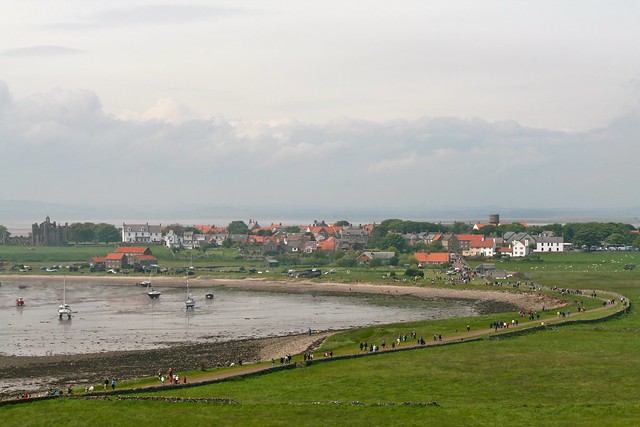
from Flickr (flickr)
View of Lindisfarne Harbour and Lindisfarne Village from the top of Lindisfarne Castle - Lindisfarne (Holy Island)
Pinned by Pat Thomson
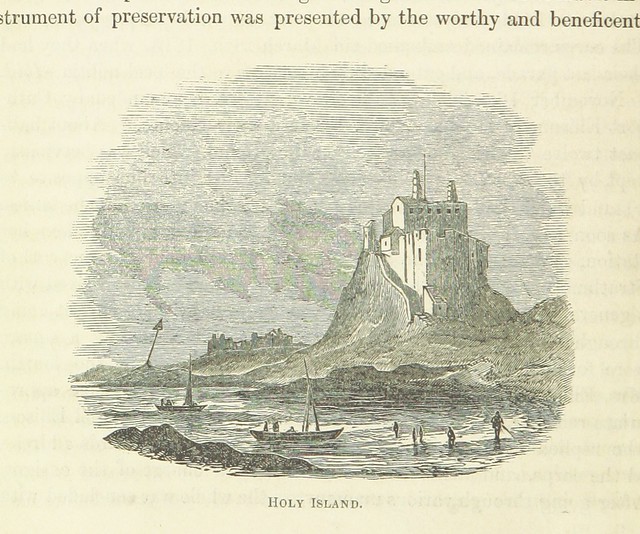
from Flickr (flickr)
Image taken from page 46 of 'The Local Historian's Table Book of remarkable occurrences, historical facts, traditions, legendary and descriptive ballads, connected with the Counties of Newcastle-upon-Tyne, Northumberland, and Durham. Historical Division.
Pinned by Simon Cotterill
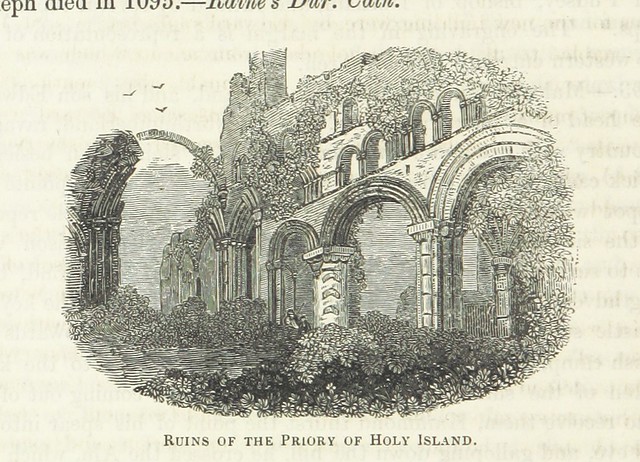
from Flickr (flickr)
Image taken from page 60 of 'The Local Historian's Table Book of remarkable occurrences, historical facts, traditions, legendary and descriptive ballads, connected with the Counties of Newcastle-upon-Tyne, Northumberland, and Durham. Historical Division.
Pinned by Simon Cotterill
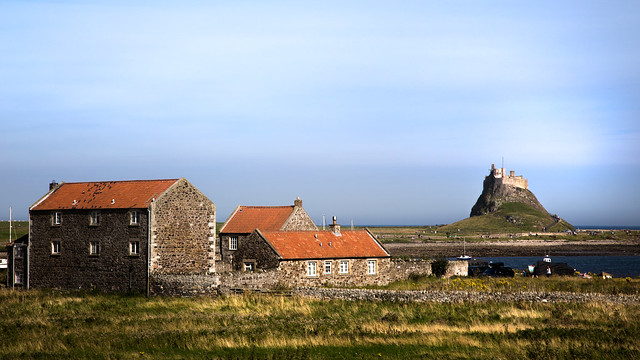
from Flickr (flickr)
Timeless - Lindisfarne castle, Holy Island, Northumberland, England
Pinned by Pat Thomson

from Youtube (youtube)
aerial video with drone - holy island with priory - 03.03.2016
Pinned by Simon Cotterill
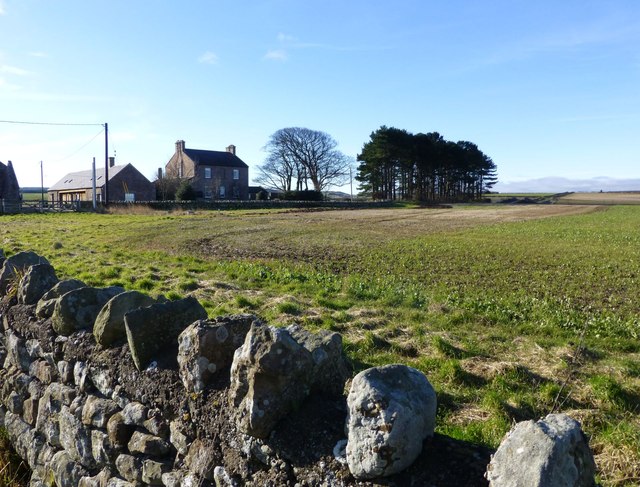
Co-Curate Page
Fenham
- Overview Map Street View Fenwick is a village in Northumberland, located about 5 miles north of Belford, and 9 miles south-east of Berwick-upon-Tweed and a mile north-east of Fenwick. There is …
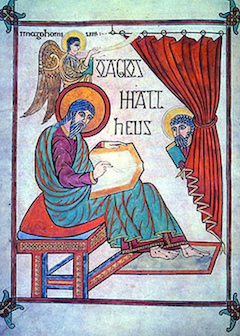
Co-Curate Page
Lindisfarne Gospels
- The Lindisfarne Gospels is a ceremonial illustrated manuscript incorporating the gospels of Saints Matthew, Mark, Luke and John, and art work with Anglo-Saxon and Celtic influences. The manuscripts were produced …

from https://holy-island.uk/crossi…
Need to know: Crossing Holy Island's Causeway
- Contents of this video:
Anatomy of a drowned car. How people get into trouble: two common scenarios.
Orientation: Where is Holy Island, how far is it from the mainland, how …
Added by
Danny Dagan
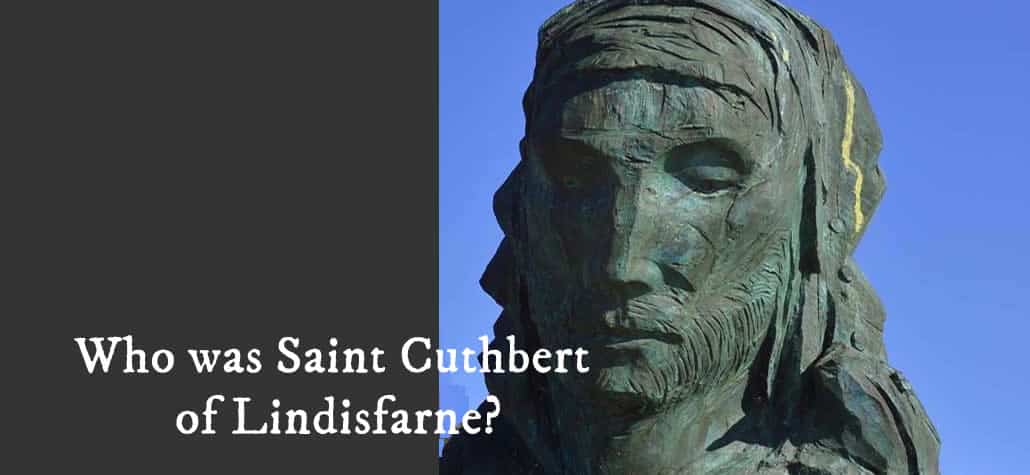
from https://holy-island.uk/who-wa…
Who was Saint Cuthbert of Lindisfarne
- Much of what we know of St. Cuthbert of Lindisfarne appears to be legendary, but every legend must start with a grain of truth. This article looks at the different …
Added by
Danny Dagan

from https://www.hiol.co.uk/visito…
10 Things to Do on Holy Island during Coronavirus | What's open?
- Many things have changed since Coronavirus took the world by surprise. I am happy to say that we are once again welcoming visitors on to the island.
Businesses and attraction …
Added by
Michael Vrieling van Tuijl

from Flickr (flickr)
Disley. Buxton Old Road & Ram's Head Hotel. 1920 NORTHUMBERLAND
Pinned by Peter Smith

from https://visitlindisfarne.com/…
Sites and landmarks on Holy Island
- A resource listing churches, landmarks and activities on Holy Island (Lindisfarne)
Added by
Danny Dagan

from Youtube (youtube)
Old marriage customs at a wedding on Holy Island (1926)
Pinned by Simon Cotterill

from Youtube (youtube)
Postcard from Lindisfarne Priory, Northumberland | Drone Footage
Pinned by Simon Cotterill


from Flickr (flickr)
View of Lindisfarne Harbour and Lindisfarne Village from the top of Lindisfarne Castle - Lindisfarne (Holy Island)
Pinned by Pat Thomson

from Flickr (flickr)
Image taken from page 46 of 'The Local Historian's Table Book of remarkable occurrences, historical facts, traditions, legendary and descriptive ballads, connected with the Counties of Newcastle-upon-Tyne, Northumberland, and Durham. Historical Division.
Pinned by Simon Cotterill

from Flickr (flickr)
Image taken from page 60 of 'The Local Historian's Table Book of remarkable occurrences, historical facts, traditions, legendary and descriptive ballads, connected with the Counties of Newcastle-upon-Tyne, Northumberland, and Durham. Historical Division.
Pinned by Simon Cotterill

from Flickr (flickr)
Timeless - Lindisfarne castle, Holy Island, Northumberland, England
Pinned by Pat Thomson

from Youtube (youtube)
aerial video with drone - holy island with priory - 03.03.2016
Pinned by Simon Cotterill

Co-Curate Page
Fenham
- Overview Map Street View Fenwick is a village in Northumberland, located about 5 miles north of Belford, and 9 miles south-east of Berwick-upon-Tweed and a mile north-east of Fenwick. There is …

Co-Curate Page
Lindisfarne Gospels
- The Lindisfarne Gospels is a ceremonial illustrated manuscript incorporating the gospels of Saints Matthew, Mark, Luke and John, and art work with Anglo-Saxon and Celtic influences. The manuscripts were produced …

from https://holy-island.uk/crossi…
Need to know: Crossing Holy Island's Causeway
- Contents of this video:
Anatomy of a drowned car. How people get into trouble: two common scenarios.
Orientation: Where is Holy Island, how far is it from the mainland, how …
Added by
Danny Dagan

from https://holy-island.uk/who-wa…
Who was Saint Cuthbert of Lindisfarne
- Much of what we know of St. Cuthbert of Lindisfarne appears to be legendary, but every legend must start with a grain of truth. This article looks at the different …
Added by
Danny Dagan

from https://www.hiol.co.uk/visito…
10 Things to Do on Holy Island during Coronavirus | What's open?
- Many things have changed since Coronavirus took the world by surprise. I am happy to say that we are once again welcoming visitors on to the island.
Businesses and attraction …
Added by
Michael Vrieling van Tuijl

from Flickr (flickr)
Disley. Buxton Old Road & Ram's Head Hotel. 1920 NORTHUMBERLAND
Pinned by Peter Smith

from https://visitlindisfarne.com/…
Sites and landmarks on Holy Island
- A resource listing churches, landmarks and activities on Holy Island (Lindisfarne)
Added by
Danny Dagan

from Youtube (youtube)
Old marriage customs at a wedding on Holy Island (1926)
Pinned by Simon Cotterill

from Youtube (youtube)
Postcard from Lindisfarne Priory, Northumberland | Drone Footage
Pinned by Simon Cotterill

Northumberland
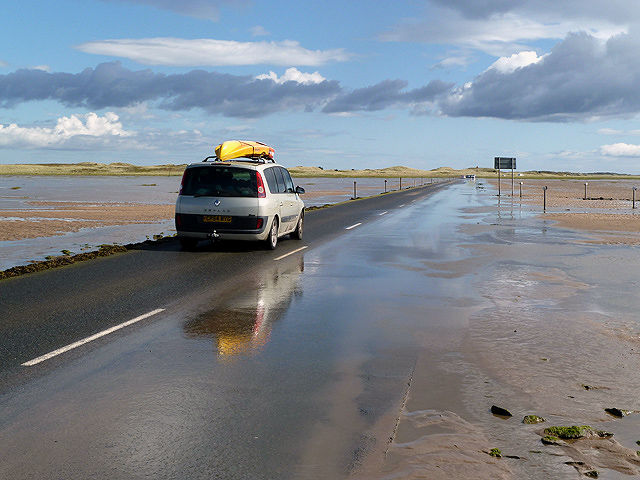
Causeway to Holy Island
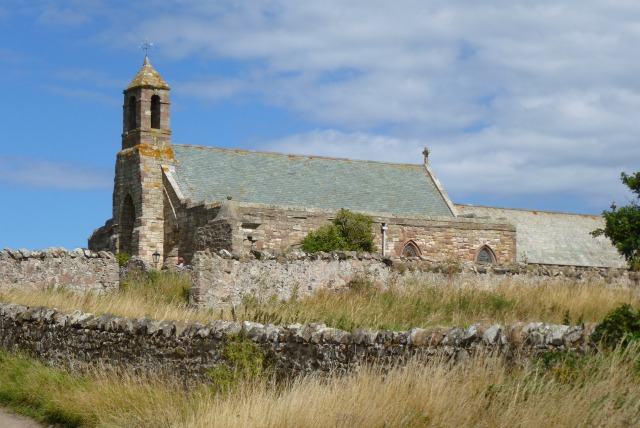
Church of St Mary, Holy Island

Gertrude Jekyll Garden, Holy Island
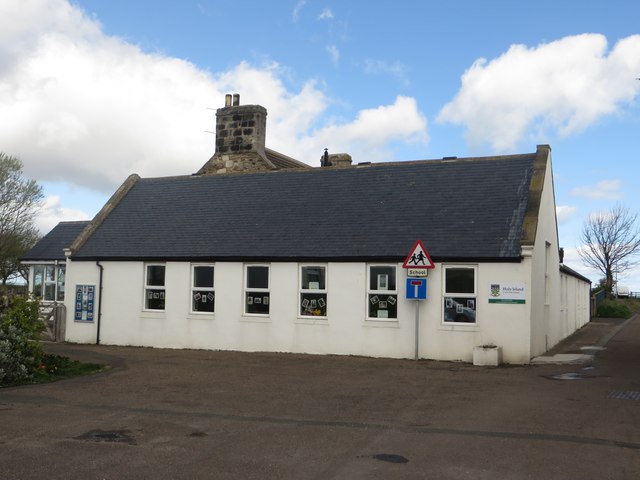
Holy Island CofE First School
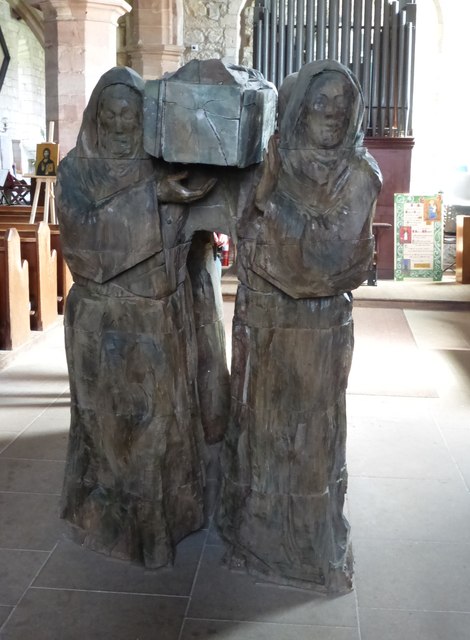
Journey, Sculpture, Holy Island
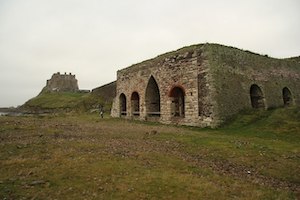
Lime Kilns, Lindisfarne
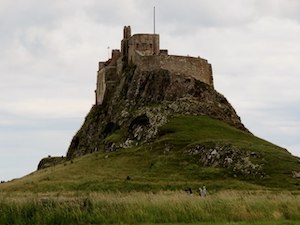
Lindisfarne Castle
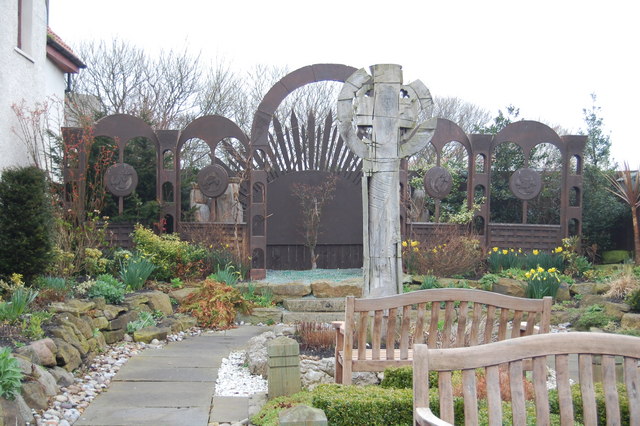
Lindisfarne Gospels Garden

Lindisfarne Priory

Map and Aerial View of Holy Island
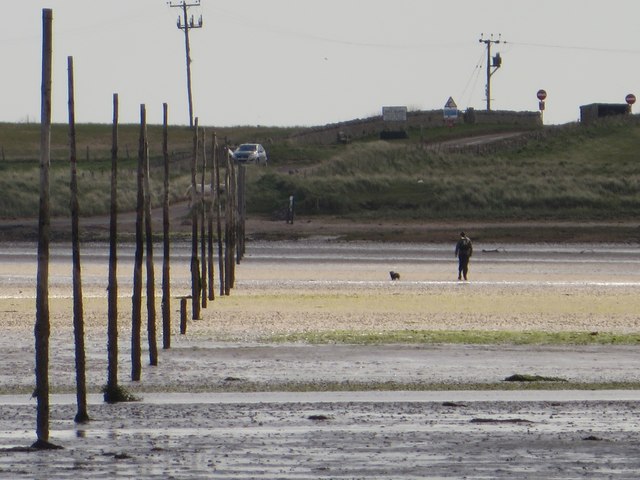
Pilgrim's Way, Holy Island
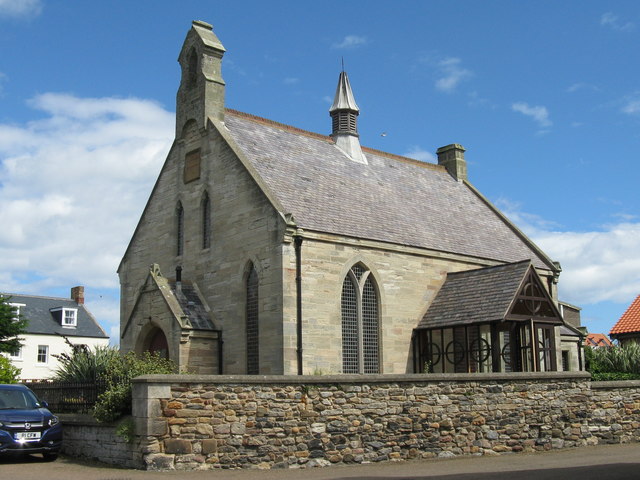
St Cuthbert’s URC Church, Holy Island
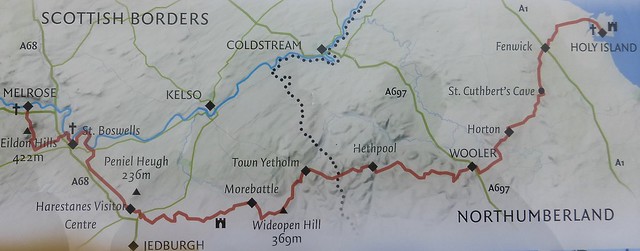
St. Cuthbert's Way

The Ship, Public House, Holy Island
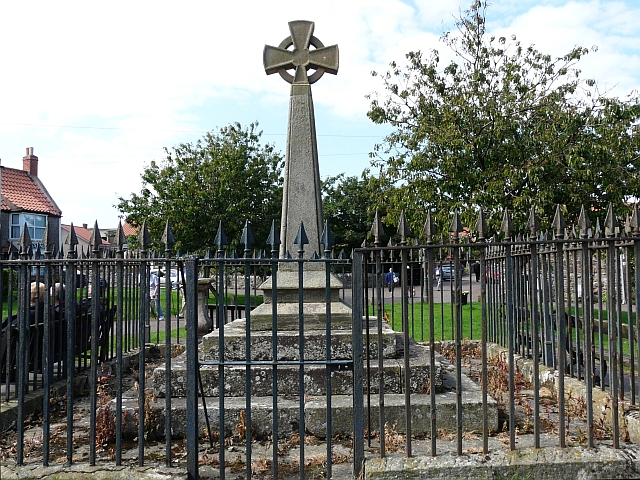
Village Cross, Holy Island
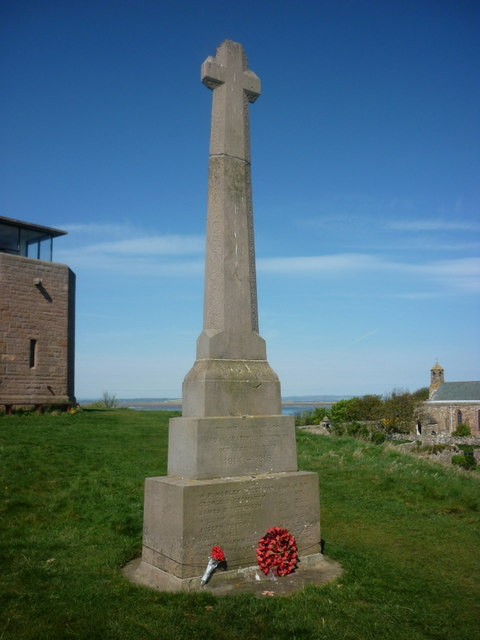
War Memorial, Holy Island
County: Northumberland
Grid sq: NU1241
Grid sq: NU1242
Grid sq: NU1243
Grid sq: NU1341
Grid sq: NU1342
Grid sq: NU1343


